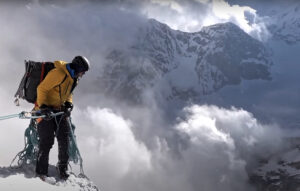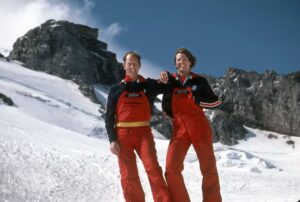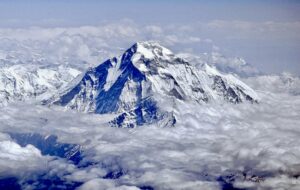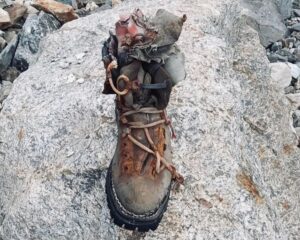Persistent strong winds and heavy snow have slowed but not stopped the climbing in the Karakorum this season. Let’s take a look at the main stories so far.
K2
The Japanese K2 expedition led by Akira Oyabe arrived early in Pakistan to give themselves as much time as possible to hit good weather. But this season’s first major expedition to the Karakorum was pinned to the lower slopes until July 6, when they first managed to “touch” Camp 2. Later teams were similarly delayed.

K2: almost as high as Everest, but steeper and more technical. Photo: Madison Mountaineering
Since then, the weather on K2 has improved markedly, and most expeditions have begun their acclimatization rotations to Camp 2. A number of them are targeting the weekend of July 21 for their summit bid.
We also had some tragic news from K2 last week. Canadian climber Serge Dessureault fell to his death just below House’s Chimney, as he descended towards Base Camp. The Montreal firefighter had been leading a nine-member international team, which called off its quest after the tragedy.
Broad Peak
In what will be a recurring theme in this update, incessant snowfall has characterized the last few weeks on 8,047m Broad Peak.
The commercial team from Furtenbach pushed for the summit on July 8 but had to stop short at 7,800m. The unsettled snow created too great an avalanche risk, and the expedition now has to decide whether to take another shot at the summit, or move on to K2.

Avalanche on Broad Peak. As the weather improves, teams are gearing up for their summit attempts. Photo: Manfred Hager
Gasherbrum I-IV
Sadly, on July 11, Italian alpinist Maurizio Giordano lost his life on Gasherbrum IV. Giordano had been part of an Italian military expedition attempting the Bonatti-Mauri route. He was reportedly killed by falling ice while rappelling down from Camp 2, at approximately 6,300m.

Suhajda Szilard and David Klein get some morning exercise digging out after yet another storm on Gasherbrum I. Photo: Suhajda Szilard
A number of other teams are attempting different routes on Gasherbrum IV. Currently, most are finishing off rotations up to 7,000m in preparation for their summit attempts. Felix Berg, Jaceck Czech and Adam Bielecki will move directly over to Gasherbrum IV after finishing Gasherbum II. It remains to be seen if the delays will give them enough time to complete both peaks.
Nanga Parbat
The Killer Mountain has delivered one of the few successes of the season so far. On July 9, the experienced Korean climber Kim Migon bagged his 14th and final 8,000m peak on 8,126m Nanga Parbat.
A number of others were not so fortunate. South African adventurer Mike Horn arrived at Base Camp in early June, but after two weeks of brutal southwesterly winds and snow, he elected to call off his attempt.

Alex Gavan and Tunc Findic set out to climb Nanga Parbat without supplemental oxygen, but gave up due to high rockfall and avalanche risk. Photo: Alex Gavan
Likewise, Alex Gavan abandoned the peak in early July, citing the high avalanche conditions on the upper reaches of the mountain. Warming weather has also increased the potential for rockfall. Gavan and his climbing partner, Tunc Findic, decided that these risks went beyond an appropriate safety level.
Lupghar Sar West

Hansjörg Auer on the summit of Lupghar Star West. Photo: Hansjörg Auer
The 7,200m Lupghar Sar West is not as imposing as some of its neighbours, but tackling it alone is no mean feat. Austrian alpinist Hansjörg Auer topped out solo on July 8, after patiently waiting out the unstable June conditions.






